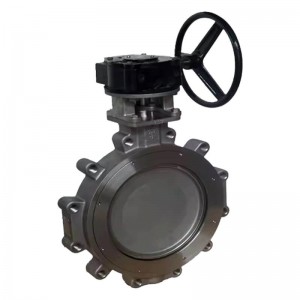When selecting a high-performance butterfly valve for your industrial, marine, or HVAC systems, it’s important to consider various factors that ensure the valve will perform optimally in the application. However, not all butterfly valves are created equal. To make an informed decision, it’s essential to know the key attributes that define a high-performance butterfly valve.In this guide, we’ll explore the top six things to look for when choosing the right butterfly valve for your needs.
1. Material Compatibility and Corrosion Resistance
One of the most critical factors in choosing a high-performance butterfly valve is the material selection. The material of the valve body, seat, and disc plays a significant role in its performance, especially when it comes to corrosion resistance.
-
Corrosion-Resistant Materials: For marine and industrial environments where exposure to harsh chemicals or saltwater is common, valves made from stainless steel, bronze, or cast iron are preferred. These materials offer excellent resistance to corrosion, ensuring that the valve functions properly over time without deteriorating due to environmental conditions.
-
Seat Material: The seat material, usually EPDM, PTFE, or NBR, is also essential for sealing performance and longevity. The right seat material ensures tight sealing, minimizes leakage, and extends the life of the valve.
2. Flow Control Efficiency
The primary function of any valve, including butterfly valves, is to control the flow of fluids or gases. However, not all butterfly valves provide the same level of control. When selecting a high-performance butterfly valve, look for the following features:
-
Flow Coefficient (Cv): The flow coefficient (Cv) is an essential metric that represents the valve’s ability to regulate fluid flow. A higher Cv indicates better flow characteristics, allowing for more precise control over flow rates.
-
V-port or Equal Percentage Trim: High-performance butterfly valves may come with V-port or equal percentage trim designs, which allow for better flow control, especially in systems where accurate flow modulation is crucial.
3. Sealing Performance
The sealing performance of a butterfly valve is essential for preventing leaks and ensuring long-term operational efficiency. Poor sealing can lead to system inefficiencies and safety hazards. Here are the key sealing attributes to look for:
-
High-Quality Seat Materials: As mentioned earlier, materials such as PTFE, EPDM, or NBR offer excellent sealing properties. High-performance butterfly valves often feature double-offset or triple-offset designs, which provide better sealing capabilities by minimizing seat wear and ensuring tight closure.
-
Bubble-tight Seal: Ensure that the valve offers a bubble-tight seal when closed, especially in applications with low-pressure systems. This ensures that no leaks occur, keeping systems running safely and efficiently.
4. Pressure and Temperature Rating
High-performance butterfly valves are designed to withstand a wide range of pressure and temperature conditions. When selecting a valve for your application, it’s important to ensure that the valve’s pressure rating and temperature tolerance match the operating conditions of your system.
-
Pressure Rating: Butterfly valves come in different pressure ratings (e.g., PN16, PN25, ANSI 150). Make sure the valve is rated for the pressures it will experience in your system. For high-pressure applications, opt for valves with higher ratings to ensure safety and durability.
-
Temperature Range: Similarly, ensure the valve can handle the temperature extremes within your system. Stainless steel valves, for example, can tolerate higher temperatures, while plastic valves may have a more limited range.
5. Actuation Options
For industrial or marine systems, having a quick and reliable valve actuation method is crucial for safety and operational efficiency. The actuation method you choose will depend on the application’s requirements for remote operation and control.
-
Manual Actuation: Manual butterfly valves are commonly used for simpler applications where minimal control is needed, and operators can manually adjust the valve.
-
Electric Actuators: For automated systems or applications requiring remote control, electric actuators are a popular choice. These actuators offer precise control and quick response times, making them ideal for high-performance valve operations.
-
Pneumatic or Hydraulic Actuators: In high-speed or hazardous environments, pneumatic or hydraulic actuators are often used to provide fast and reliable operation with minimal risk of human error.
6. Durability and Maintenance
The lifespan and maintenance requirements of a valve are essential considerations for its overall cost-effectiveness. A high-performance butterfly valve should be designed to provide years of reliable service with minimal maintenance.
-
Long-lasting Materials: Ensure that the valve body and internal components are made from durable materials that can withstand frequent cycling and exposure to harsh conditions. Stainless steel and duplex stainless steel offer both strength and resistance to wear and tear.
-
Easy Maintenance: A high-performance butterfly valve should be designed for easy maintenance. Features such as replaceable seats, fewer moving parts, and accessibility for cleaning and inspection can help extend the life of the valve and reduce downtime.
Conclusion
Choosing the right high-performance butterfly valve involves considering several factors, from material compatibility to actuation options. These valves play a vital role in controlling fluid flow efficiently and safely in marine, industrial, and HVAC systems. When selecting a valve, focus on key attributes such as corrosion resistance, sealing performance, flow control efficiency, pressure and temperature ratings, and ease of maintenance to ensure optimal performance.
Post time: Feb-14-2025

